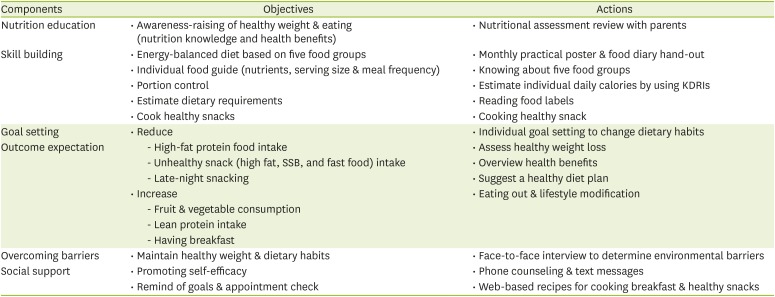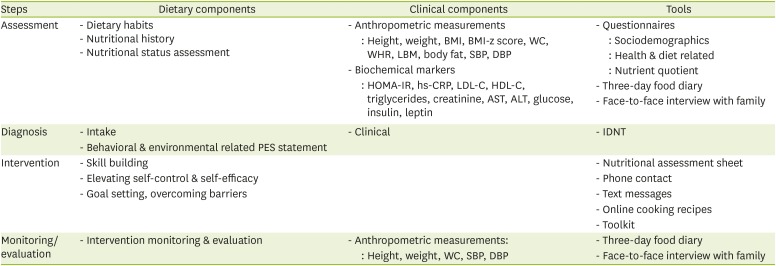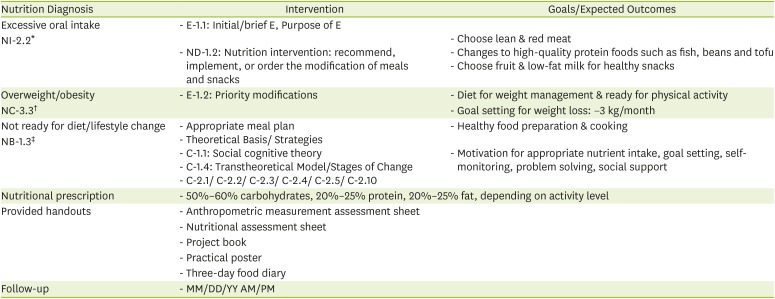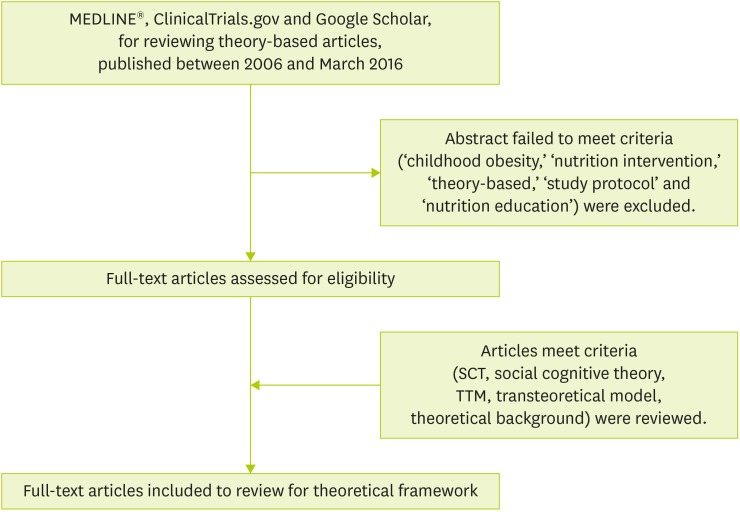1. World Health Organization. Report of the commission on ending childhood obesity. Geneva: World Health Organization;2016.
2. Ng M, Fleming T, Robinson M, Thomson B, Graetz N, Margono C, Mullany EC, Biryukov S, Abbafati C, Abera SF, Abraham JP, Abu-Rmeileh NM, Achoki T, AlBuhairan FS, Alemu ZA, Alfonso R, Ali MK, Ali R, Guzman NA, Ammar W, Anwari P, Banerjee A, Barquera S, Basu S, Bennett DA, Bhutta Z, Blore J, Cabral N, Nonato IC, Chang JC, Chowdhury R, Courville KJ, Criqui MH, Cundiff DK, Dabhadkar KC, Dandona L, Davis A, Dayama A, Dharmaratne SD, Ding EL, Durrani AM, Esteghamati A, Farzadfar F, Fay DF, Feigin VL, Flaxman A, Forouzanfar MH, Goto A, Green MA, Gupta R, Hafezi-Nejad N, Hankey GJ, Harewood HC, Havmoeller R, Hay S, Hernandez L, Husseini A, Idrisov BT, Ikeda N, Islami F, Jahangir E, Jassal SK, Jee SH, Jeffreys M, Jonas JB, Kabagambe EK, Khalifa SE, Kengne AP, Khader YS, Khang YH, Kim D, Kimokoti RW, Kinge JM, Kokubo Y, Kosen S, Kwan G, Lai T, Leinsalu M, Li Y, Liang X, Liu S, Logroscino G, Lotufo PA, Lu Y, Ma J, Mainoo NK, Mensah GA, Merriman TR, Mokdad AH, Moschandreas J, Naghavi M, Naheed A, Nand D, Narayan KM, Nelson EL, Neuhouser ML, Nisar MI, Ohkubo T, Oti SO, Pedroza A, Prabhakaran D, Roy N, Sampson U, Seo H, Sepanlou SG, Shibuya K, Shiri R, Shiue I, Singh GM, Singh JA, Skirbekk V, Stapelberg NJ, Sturua L, Sykes BL, Tobias M, Tran BX, Trasande L, Toyoshima H, van de Vijver S, Vasankari TJ, Veerman JL, Velasquez-Melendez G, Vlassov VV, Vollset SE, Vos T, Wang C, Wang X, Weiderpass E, Werdecker A, Wright JL, Yang YC, Yatsuya H, Yoon J, Yoon SJ, Zhao Y, Zhou M, Zhu S, Lopez AD, Murray CJ, Gakidou E. Global, regional, and national prevalence of overweight and obesity in children and adults during 1980–2013: a systematic analysis for the Global Burden of Disease Study 2013. Lancet. 2014; 384:766–781. PMID:
24880830.

3. Korean Ministry of Education. A sample survey from school health examination. Sejong: Korean Ministry of Education;2015.
4. Ben-Sefer E, Ben-Natan M, Ehrenfeld M. Childhood obesity: current literature, policy and implications for practice. Int Nurs Rev. 2009; 56:166–173. PMID:
19646165.

5. Kirk S, Scott BJ, Daniels SR. Pediatric obesity epidemic: treatment options. J Am Diet Assoc. 2005; 105(Suppl 1):S44–S51. PMID:
15867895.

6. Gittelsohn J, Trude AC, Poirier L, Ross A, Ruggiero C, Schwendler T, Anderson Steeves E. The impact of a multi-level multi-component childhood obesity prevention intervention on healthy food availability, sales, and purchasing in a low-income urban area. Int J Environ Res Public Health. 2017; 14:1371.

7. Xu F, Marchand S, Corcoran C, DiBiasio H, Clough R, Dyer CS, Nobles J, White J, Greaney ML, Greene GW. A community-based nutrition and physical activity intervention for children who are overweight or obese and their caregivers. J Obes. 2017; 2017:2746595. PMID:
29312784.

8. Soltero EG, Konopken YP, Olson ML, Keller CS, Castro FG, Williams AN, Patrick DL, Ayers S, Hu HH, Sandoval M, Pimentel J, Knowler WC, Frick KD, Shaibi GQ. Preventing diabetes in obese Latino youth with prediabetes: a study protocol for a randomized controlled trial. BMC Public Health. 2017; 17:261. PMID:
28302101.

9. Carvalho de Menezes M, Bedeschi LB, Santos LC, Lopes AC. Interventions directed at eating habits and physical activity using the Transtheoretical Model: a systematic review. Nutr Hosp. 2016; 33:586. PMID:
27759990.

11. Prochaska JO, Velicer WF. The transtheoretical model of health behavior change. Am J Health Promot. 1997; 12:38–48. PMID:
10170434.

12. Contento IR. Nutrition education: linking research, theory, and practice. Asia Pac J Clin Nutr. 2008; 17(Suppl 1):176–179. PMID:
18296331.
13. Wang Y, Cai L, Wu Y, Wilson RF, Weston C, Fawole O, Bleich SN, Cheskin LJ, Showell NN, Lau BD, Chiu DT, Zhang A, Segal J. What childhood obesity prevention programmes work? A systematic review and meta-analysis. Obes Rev. 2015; 16:547–565. PMID:
25893796.

14. Hoelscher DM, Kirk S, Ritchie L, Cunningham-Sabo L. Academy Positions Committee. Position of the Academy of Nutrition and Dietetics: interventions for the prevention and treatment of pediatric overweight and obesity. J Acad Nutr Diet. 2013; 113:1375–1394. PMID:
24054714.

15. Lobstein T, Jackson-Leach R, Moodie ML, Hall KD, Gortmaker SL, Swinburn BA, James WP, Wang Y, McPherson K. Child and adolescent obesity: part of a bigger picture. Lancet. 2015; 385:2510–2520. PMID:
25703114.

16. Electronic Nutrition Care Process Terminology. Nutrition terminology reference manual: dietetics language for nutrition care. 2016. cited 2019 January 17. Available from:
http://ncpt.webauthor.com.
17. Stea TH, Haugen T, Berntsen S, Guttormsen V, Øverby NC, Haraldstad K, Meland E, Abildsnes E. Using the Intervention Mapping protocol to develop a family-based intervention for improving lifestyle habits among overweight and obese children: study protocol for a quasi-experimental trial. BMC Public Health. 2016; 16:1092. PMID:
27756346.

18. Cunningham-Sabo L, Lohse B, Smith S, Browning R, Strutz E, Nigg C, Balgopal M, Kelly K, Ruder E. Fuel for Fun: a cluster-randomized controlled study of cooking skills, eating behaviors, and physical activity of 4th graders and their families. BMC Public Health. 2016; 16:444. PMID:
27230565.

19. Lohse B, Smith S, Cunningham-Sabo L. Fuel for fun impact study affirms positive effect on fruit & vegetable preference and approach to cooking in school age youth. Poster presented at: Annual Meeting of the Society for Nutrition Education and Behavior. July 2015; Pittsburgh (PA). Fort Collins (CO): Colorado State University, College of Health and Human Sciences;2015.
20. Partridge SR, McGeechan K, Hebden L, Balestracci K, Wong AT, Denney-Wilson E, Harris MF, Phongsavan P, Bauman A, Allman-Farinelli M. Effectiveness of a mHealth lifestyle program with telephone support (TXT2BFiT) to prevent unhealthy weight gain in young adults: randomized controlled trial. JMIR Mhealth Uhealth. 2015; 3:e66. PMID:
26076688.

21. Sawesi S, Rashrash M, Phalakornkule K, Carpenter JS, Jones JF. The impact of information technology on patient engagement and health behavior change: a systematic review of the literature. JMIR Med Inform. 2016; 4:e1. PMID:
26795082.

22. Spook J, Paulussen T, Kok G, van Empelen P. Evaluation of a serious self-regulation game intervention for overweight-related behaviors (“Balance It”): a pilot study. J Med Internet Res. 2016; 18:e225. PMID:
27670222.

23. Taveras EM, Marshall R, Horan CM, Gillman MW, Hacker K, Kleinman KP, Koziol R, Price S, Simon SR. Rationale and design of the STAR randomized controlled trial to accelerate adoption of childhood obesity comparative effectiveness research. Contemp Clin Trials. 2013; 34:101–108. PMID:
23099100.

24. Taveras EM, Marshall R, Kleinman KP, Gillman MW, Hacker K, Horan CM, Smith RL, Price S, Sharifi M, Rifas-Shiman SL, Simon SR. Comparative effectiveness of childhood obesity interventions in pediatric primary care: a cluster-randomized clinical trial. JAMA Pediatr. 2015; 169:535–542. PMID:
25895016.
25. Brug J, te Velde SJ, Chinapaw MJ, Bere E, de Bourdeaudhuij I, Moore H, Maes L, Jensen J, Manios Y, Lien N, Klepp KI, Lobstein T, Martens M, Salmon J, Singh AS. Evidence-based development of school-based and family-involved prevention of overweight across Europe: the ENERGY-project's design and conceptual framework. BMC Public Health. 2010; 10:276. PMID:
20500859.

26. Bush NR, Allison AL, Miller AL, Deardorff J, Adler NE, Boyce WT. Socioeconomic disparities in childhood obesity risk: association with an oxytocin receptor polymorphism. JAMA Pediatr. 2017; 171:61–67. PMID:
27842184.

27. Chen Y, Ma L, Ma Y, Wang H, Luo J, Zhang X, Luo C, Wang H, Zhao H, Pan D, Zhu Y, Cai L, Zou Z, Yang W, Ma J, Jing J. A national school-based health lifestyles interventions among Chinese children and adolescents against obesity: rationale, design and methodology of a randomized controlled trial in China. BMC Public Health. 2015; 15:210. PMID:
25885323.

28. Eisenmann JC, Alaimo K, Pfeiffer K, Paek HJ, Carlson JJ, Hayes H, Thompson T, Kelleher D, Oh HJ, Orth J, Randall S, Mayfield K, Holmes D. Project FIT: rationale, design and baseline characteristics of a school- and community-based intervention to address physical activity and healthy eating among low-income elementary school children. BMC Public Health. 2011; 11:607. PMID:
21801411.

29. Evans A, Ranjit N, Hoelscher D, Jovanovic C, Lopez M, McIntosh A, Ory M, Whittlesey L, McKyer L, Kirk A, Smith C, Walton C, Heredia NI, Warren J. Impact of school-based vegetable garden and physical activity coordinated health interventions on weight status and weight-related behaviors of ethnically diverse, low-income students: study design and baseline data of the Texas, Grow! Eat! Go! (TGEG) cluster-randomized controlled trial. BMC Public Health. 2016; 16:973. PMID:
27624139.

30. HaGani N, Moran MR, Caspi O, Plaut P, Endevelt R, Baron-Epel O. The relationships between adolescents' obesity and the built environment: are they city dependent? Int J Environ Res Public Health. 2019; 16:1579.

31. Irwin CC, Irwin RL, Miller ME, Somes GW, Richey PA. Get fit with the Grizzlies: a community-school-home initiative to fight childhood obesity. J Sch Health. 2010; 80:333–339. PMID:
20591098.

32. Jia P, Xue H, Cheng X, Wang Y, Wang Y. Association of neighborhood built environments with childhood obesity: evidence from a 9-year longitudinal, nationally representative survey in the US. Environ Int. 2019; 128:158–164. PMID:
31055202.

33. Lubans DR, Morgan PJ, Dewar D, Collins CE, Plotnikoff RC, Okely AD, Batterham MJ, Finn T, Callister R. The Nutrition and Enjoyable Activity for Teen Girls (NEAT girls) randomized controlled trial for adolescent girls from disadvantaged secondary schools: rationale, study protocol, and baseline results. BMC Public Health. 2010; 10:652. PMID:
21029467.

34. Hoelscher DM, Butte NF, Barlow S, Vandewater EA, Sharma SV, Huang T, Finkelstein E, Pont S, Sacher P, Byrd-Williams C, Oluyomi AO, Durand C, Li L, Kelder SH. Incorporating primary and secondary prevention approaches to address childhood obesity prevention and treatment in a low-income, ethnically diverse population: study design and demographic data from the Texas Childhood Obesity Research Demonstration (TX CORD) study. Child Obes. 2015; 11:71–91. PMID:
25555188.

35. Verbestel V, De Henauw S, Maes L, Haerens L, Mårild S, Eiben G, Lissner L, Moreno LA, Frauca NL, Barba G, Kovács E, Konstabel K, Tornaritis M, Gallois K, Hassel H, De Bourdeaudhuij I. Using the intervention mapping protocol to develop a community-based intervention for the prevention of childhood obesity in a multi-centre European project: the IDEFICS intervention. Int J Behav Nutr Phys Act. 2011; 8:82. PMID:
21806806.

36. De Henauw S, Huybrechts I, De Bourdeaudhuij I, Bammann K, Barba G, Lissner L, Mårild S, Molnár D, Moreno LA, Pigeot I, Tornaritis M, Veidebaum T, Verbestel V, Ahrens W. IDEFICS consortium. Effects of a community-oriented obesity prevention programme on indicators of body fatness in preschool and primary school children. Main results from the IDEFICS study. Obes Rev. 2015; 16(Suppl 2):16–29. PMID:
26707013.

37. Arvidsson L, Bogl LH, Eiben G, Hebestreit A, Nagy P, Tornaritis M, Moreno LA, Siani A, Veidebaum T, De Henauw S, Lissner L. IDEFICS and I.Family consortia. Fat, sugar and water intakes among families from the IDEFICS intervention and control groups: first observations from I.Family. Obes Rev. 2015; 16(Suppl 2):127–137.

38. Bandura A. Health promotion from the perspective of social cognitive theory. Psychol Health. 1998; 13:623–649.

39. Bandura A. Self-efficacy: toward a unifying theory of behavioral change. Psychol Rev. 1977; 84:191–215. PMID:
847061.

40. Korean Nutrition Society. Dietary reference intakes for Koreans. Seoul: Korean Nutrition Society;2015.
41. Larson NI, Story M, Eisenberg ME, Neumark-Sztainer D. Food preparation and purchasing roles among adolescents: associations with sociodemographic characteristics and diet quality. J Am Diet Assoc. 2006; 106:211–218. PMID:
16442868.

42. Diabetes Prevention Program (DPP) Research Group. The Diabetes Prevention Program (DPP): description of lifestyle intervention. Diabetes Care. 2002; 25:2165–2171. PMID:
12453955.
43. Keller C, Coe K, Shaibi G. Using Rituals for Intervention Refinement. Health Cult Soc (Pittsburgh Pa). 2015; 8:37–45.

44. Davison KK, Lawson HA, Coatsworth JD. The Family-centered Action Model of Intervention Layout and Implementation (FAMILI): the example of childhood obesity. Health Promot Pract. 2012; 13:454–461. PMID:
21632465.
45. Ross MM, Kolbash S, Cohen GM, Skelton JA. Multidisciplinary treatment of pediatric obesity: nutrition evaluation and management. Nutr Clin Pract. 2010; 25:327–334. PMID:
20702836.

46. Korea Centers for Disease Control and Prevention. The eleventh Korea youth risk behavior web-based survey user's guide. Cheongju: Korea Centers for Disease Control and Prevention;2017.








 PDF
PDF ePub
ePub Citation
Citation Print
Print




 XML Download
XML Download